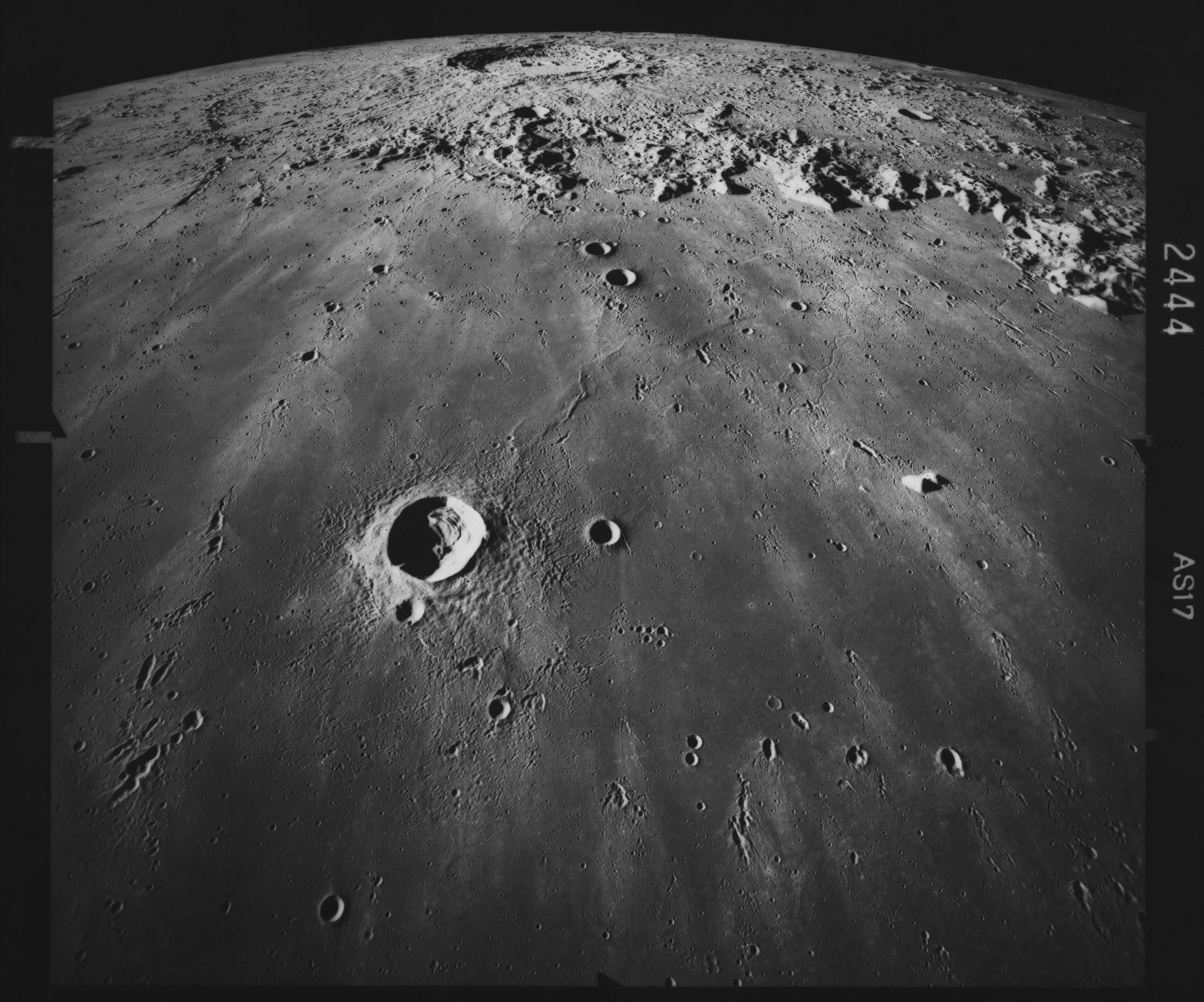Why the Moon looks different each night — a complete explanation of lunar phases and their cycle
-
 Image of the lunar surface, looking south across Mare Imbrium, with the crater Copernicus (58 miles in diameter) visible in the distance, in an image of the lunar surface taken during the Apollo 17, 7th to 19th December 1972. Crater Pytheas (12 miles in diameter) is visible in the foreground, with several chains of small craters beyond, these are oriented toward Copernicus and are secondary craters produced by material ejected when Copernicus formed. (Photo by Space Frontiers/Archive Photos/Hulton Archive/Getty Images)
Image of the lunar surface, looking south across Mare Imbrium, with the crater Copernicus (58 miles in diameter) visible in the distance, in an image of the lunar surface taken during the Apollo 17, 7th to 19th December 1972. Crater Pytheas (12 miles in diameter) is visible in the foreground, with several chains of small craters beyond, these are oriented toward Copernicus and are secondary craters produced by material ejected when Copernicus formed. (Photo by Space Frontiers/Archive Photos/Hulton Archive/Getty Images)The Moon has always caught people’s attention. Some nights, it looks big and bright, and on others, it’s only a thin slice in the sky. These changes are called Moon phases, and they are because of how the Sun lights up the Moon as it moves around Earth. The cycle of these phases takes about 29 and a half days, which is roughly one month.
Why the Moon Changes Shape
The Moon doesn't make its own light. What we see from Earth is sun reflected from its face. As the Moon moves around Earth, we see different corridor of its bright side. This is what makes the Moon’s shape look different every night. Occasionally we see the whole Moon, occasionally only half, and occasionally none of it at all.
When the Moon is between the Earth and the Sun, the bright side faces down from us, so we can’t see it. As it moves around Earth, further of its sunlit side becomes visible. By the middle of the cycle, the whole side is lit up, giving us a full moon. also, the light sluggishly starts to fade again until it becomes dark formerly more.
The Eight Main Phases of the Moon
The Moon goes through eight main phases, each showing a different amount of light.
- New Moon – The Moon is invisible because the bright side faces away from Earth.
- Waxing Crescent – A small bright curve appears on the right side. Each night, it gets a little bigger.
- First Quarter – We can see half of the Moon’s face. The right half is bright, and the other half is dark.
- Waxing Gibbous – More than half of the Moon is now bright as it moves toward becoming full.
- Full Moon – The whole face of the Moon is lit up. This is when it shines the brightest in the night sky.
- Waning Gibbous – After the full moon, the bright part starts to shrink again.
- Last Quarter – We see half of the Moon again, but now the left half is bright.
- Waning Crescent – Only a small curve of light remains before the Moon goes dark again.
After the waning crescent, the Moon returns to the new moon phase, and the cycle starts over.
Why the Cycle Keeps Repeating
It takes about 27 days for the Moon to move around Earth once, but because Earth is also moving around the Sun, we don’t see the same phase until about 29 and a half days later.
That’s why we get one full Moon roughly every month. This repeating cycle has been used for centuries to track time, mark festivals, and plan farming seasons.
Why the Moon rises and sets at Different Times
The Moon doesn’t rise or set at the same time every day. It depends on the phase. A new moon rises and sets almost with the Sun, while a full moon rises at sunset and sets at sunrise. Every day, the Moon rises about 50 minutes later than the day before. This is why you might see it high in the afternoon sometimes and late at night at other times.
The Moon’s Connection to Earth
The Moon’s changes are not just pretty to watch — they affect life on Earth too. The Moon’s pull causes tides in the oceans, and its light has guided people for thousands of years. Many traditions, holidays, and cultural events still follow the Moon’s calendar.
Even though scientists now understand exactly why the Moon changes shape, it continues to fascinate people all over the world. Watching the Moon reminds us of how connected we are to the rhythms of nature.
You don’t need a telescope to enjoy the Moon. Just look up each night and notice how its shape changes. Over a month, you’ll see it grows from a thin crescent to a bright circle and then shrinks back again. The Moon’s steady rhythm is a simple reminder of how time moves in cycles — always changing, yet always returning to where it began.
TOPICS: Lunar Phase